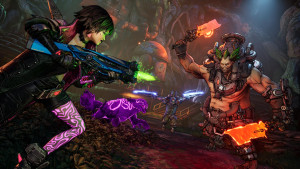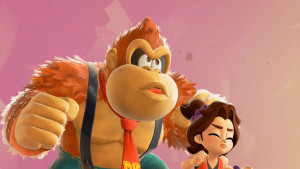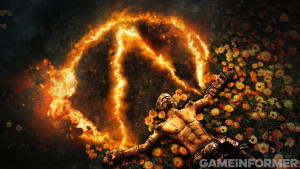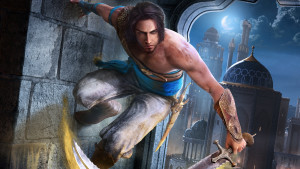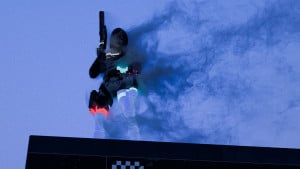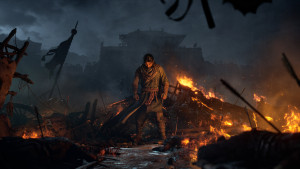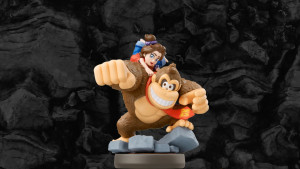Last chance for early bird pricing! Subscribe by June 25th to receive the debut issue
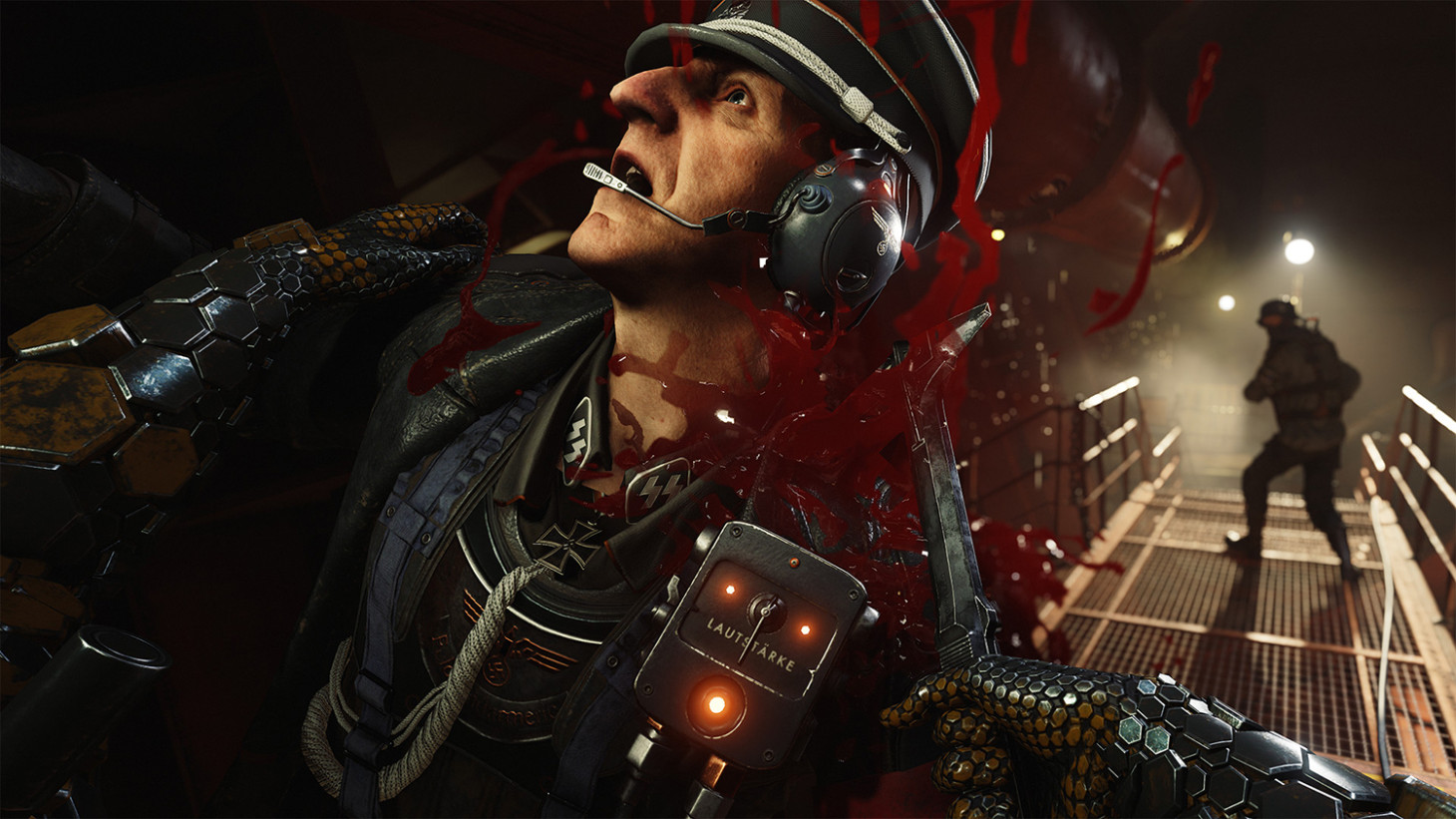
Running Down The History Of Wolfenstein
Today, first-person shooters are inescapable, with the biggest franchises letting players roam the battlefields of history and imagination to mow down foes, win wars, and emerge as the top contender on scoreboards. The genre hasn’t always been as ubiquitous as its current success suggests, however.
While Doom is often remembered as the game that kickstarted the first-person shooter craze, Wolfenstein 3D paved the way for its sci-fi sibling to come screaming into existence. However, Wolfenstein is more than just a stepping stone. Over the years the pulpy WW2 has changed several developers’ hands, constantly transmuting and bouncing all over the place tone-wise, but has never lost its identity, even when both Medal of Honor and Call of Duty arrived, choosing to wallow about in arcadey violence instead of following the more realistic and procedural design of more modern WWII titles for two decades.
With Wolfenstein II: The New Colossus out in a few weeks’ time, we thought it pertinent to go over the long history of the series and break down the confusing chronology of its decades-long storyline.

Shootin’, Stabbin’, Sneakin’ Around Nazis
Wolfenstein arrived nearly a decade before we first met the bare-chested, machine gun-wielding Schwarzenegger stand-in B.J. Blazkowicz. Castle Wolfenstein and its sequel, Beyond Castle Wolfenstein, were action-adventure titles developed for the Apple II and Commodore-64 that put more emphasis on infiltration and sneaking than the bloodletting of its successors.
Let’s not misspeak here: you still killed a lot of Nazis in these games. However, both titles had more in common with the pre-Solid Metal Gear games than anything else, letting you hide bodies, pick locks, and stab enemies. These early titles were a far cry from the constant stream of bullets tearing apart Nazis that would come to define the series’ ethos. Still, Muse Software’s adventure series laid the foundation for later Wolfenstein titles, particularly with its thematic focus on infiltrating bases, keeps, and bunkers.
In 1992, id Software, at that point known for the amusing platformer Commander Keen, took the series in a bold new direction that changed video games forever.

A Change Of Perspective
Few games exist which you can truly call evolutionary without receiving a raised eyebrow or dismissive chuckle in response. Wolfenstein 3D makes that short list with ease. A retooling of Muse Software’s games, 3D gave us a memorable protagonist, B.J. Blazkowicz, and let us see the world through his eyes. While Doom is often considered id Software’s masterpiece, Wolfenstein 3D founded an entire genre and introduced players to a new way of playing video games.
In his book Masters of Doom, David Kushner explains why Castle Wolfenstein was the perfect candidate for id's genre-founding transformation:
Wolfenstein was perfect for Carmack’s technology because it was, at its core, a maze-based shooter. The player had to run through all these labyrinths fighting Nazis and collecting treasure, and then doing away with Hitler. Despite the game’s blocky, low-resolution graphics, it was unique in its implication of a larger virtual world. When Caste Wolfenstein was released, most games for computers or arcades, like Pong, existed on one static screen. But in Wolfenstein the conceit was that each screen the player saw represented one room of a large castle. Each room was a maze of walls. When players ran through the maze, the screen would change, showing a new room. Though there was no scrolling, the feeling was one of true exploration.
The combination of first-person perspective, seen previously in the likes of Wing Commander and MDI Maze, with the concept of Castle Wolfenstein's exploration as well as Id's amazing (for the time) 3D graphics made games feel intimate in a way that they had never felt before.
For all its innovation, Wolfenstein 3D has not aged well. The mazes feel dull thanks to the castle’s gray and brown hallways, which are only occasionally peppered with a Swastika or portrait of a Nazi, and the enemy variety leaves much to be desired. People still remember Doom fondly over Wolfenstein 3D because Doom is a superior game, with a fully-realized, otherworldly setting packed to the brim with countless, well-designed enemies. Wolfenstein may not be as good, but it made everything people love about Doom, and the rest of the first-person shooter genre, a reality.
After Doom, many people forgot about Wolfenstein 3D. Within a few years, the term “Doom Clone” that was being bandied about the gaming world was phased out as it became clear this style of game, combining the intimacy of the first-person perspective with gun violence, was emerging as a genre unto itself. Titles like Quake, Duke Nukem 3D, Half-Life, Rainbow Six, Starsiege: Tribes, GoldenEye: 007 became embedded in the consciousness of pop culture. The stylized, high-production violence of Arnold Schwarzenegger and Tom Clancy films had finally arrived on our consoles and computers in the form of first-person shooters, and we were the stars.

The Return
Id Software never returned to Wolfenstein after the original release. The company instead kept its focus firmly in the realm of science fiction after Doom by developing Quake, various Doom sequels, and the post-apocalyptic FPS/RPG hybrid Rage. Wolfenstein, with its particularly chaotic brand of Nazi bloodshed, lay forgotten for nearly a decade as other developers introduced their own World War II action games like Medal of Honor and Hidden & Dangerous.
In 2001, Gray Matter Interactive and Nerve Software rebooted the series as Return To Castle Wolfenstein (RTCW). Like Wolfenstein 3D retained the infiltration-focused foundation of the adventure games, RTCW strived to embrace the heritage of frenzied, Nazi-slaying gunplay that became 3D’s defining feature while also embracing trends running through the gaming industry at this point. Essentially, this meant that RTCW had a (dumb) story, with characters who had (simple) motivations. B.J. Blazkowicz, who had existed primarily as a generic action hero, now spoke and was on a clearly defined crusade to stop evil dudes with a little more form to them than just "Generic Nazi." Blazko also sported a new look, with the blonde muscular man of the original game being replaced by a smaller character with a black-haired, roguish look. The castle levels were also more vertical and realistic, with cafeterias, offices, and bunk rooms as opposed to an endless labyrinth.
RTCW also eventually gave birth to Enemy Territory, a class-based multiplayer shooter that was ahead of its time due to its atypical release. Originally conceived as an expansion pack, the game suffered problems during development and was eventually released as free standalone game. The game, alongside Day of Defeat and Team Fortress, helped popularize class-based multiplayer games and continues to enjoy a healthy community to this day thanks to mods and community support.
Outside of its beloved multiplayer, Return To Castle Wolfenstein didn’t set the world on fire. The campaign was fine for its time, but felt inferior to the likes of Half-Life and Halo, which had released four days earlier and pushed the genre forward in exciting new ways. However, this entry introduced important elements that would carry forward into its predecessors: A Raiders Of The Lost Ark-esque theme centered on Nazis being obsessed with the supernatural, the resistance group known The Kreisau Circle, and the introduction of General Deathshead, who would end up being the primary baddie in The New Order.
In 2009, Wolfenstein yet again made its way to a new generation of hardware. Developed by Raven Software, the simply named Wolfenstein was a direct successor to RTCW featuring the black-haired variant of BJ again and dosing him up with super powers. This entry leans even harder into the occult than the previous game, with an alternate dimension playing a huge role in the plot as well as a few monsters. Despite some interesting ideas, Raven Software’s take on the franchise just didn’t feel true to the series. It replaced the classic health bar with Call of Duty’s duck & cover regenerating health scheme, and went all in on a story that just wasn’t good at all.
Our own Matt Bertz ended his review of the game, saying “Speaking of strategy, Wolfenstein is in dire need of a new one. Grinding through waves of predictable enemies in corridors is no way to pay homage to the franchise’s unquestioned legacy in the genre.”
Luckily, that new strategy was just a few years off.

Raising The Stakes
In 2009, several key members from Starbreeze Games, best known for developing The Chronicles of Riddick: Escape From Butcher Bay and The Darkness, left to form their own development studio, MachineGames. After negotiations with Bethesda, who now owned the license for Wolfenstein, MachineGames set out to build their own unique interpretation of the classic franchise, one that tried to do justice by 3D’s frenzied violence while also introducing a heartfelt story about finding hope in a world filled with despair.
The result was Wolfenstein: The New Order, a game confusingly billed as a reboot but which was actually a continuation of the story that began with Return To Castle Wolfenstein. However, The New Order was a radical departure in everything but chronology. The rogueish verison of B.J. Blazkowicz was gone, replaced with the familiar blonde-haired, strong-chinned and bulky figure from Wolfenstein 3D. The occult powers and kooky tone of the Raven Software’s stab at the series were tossed to the wayside, with this entry focusing on a bleak alternate future where the Nazis won the war and B.J. ended up in a coma. Waking in 1961, Blazkowicz teams up with the remnants of the Kresiau circle to try and free the world from the iron grip of the Nazis.
Despite an early lukewarm response to previews of the game, The New Order released to strong reviews and sales. While on paper the game’s pitch might sound thematically close to the rest of the series’ goofy mixture of fantasy and history, MachineGames’ debut is noteworthy because it approaches its subject matter with a surprising amount of solemn respect. The resistance fighters in The New Order are not jovial caricatures who recite prose from Marx or the Declaration of Independence but instead actual characters who have been broken by the world around them, separated from their families and homes, forced into servitude or worse because the regime doesn’t see them as people. B.J. himself, so often presented as a silent action movie hero type or a pluckish rogueboy, seems weary and half-ready for the long sleep.
The run and gun action mechanics of the series also received an overhaul, with an RPG-lite system letting you unlock buffs (like more health) and increased ammo for your weapons, while also removing some of the modifications that other entries in the series had made. Gone was the duck-and-cover regenerating health, instead replaced by a health mere that regenerated in 20 HP segments. For most areas in the campaign, you’re also allowed a fair amount of flexibility with stealth – getting back to the infiltration foundation of the series – with B.J. able to sneak around environments and pick off enemies with knife and silenced pistol before the firefights begin in earnest.
With The New Order, Wolfenstein (for the first time since 1992) was a game that people were talking about, showering its handling of serious themes with both praise and rebuke. A stealth infiltration level drew particular ire for how some thought it gamefied the holocaust while others, like myself, were drawn to the soul-baring monologues of Set Roth regarding faith and moral imperatives. In the end, perhaps the best that can be said about The New Order is that it is an ambitious, messy game that ultimately succeeds because it makes its home in the hearts of the desperate.
Less than a year after The New Order’s release, MachineGames followed up with a standalone expansion pack called The Old Blood. The Old Blood, a remake of Return To Castle Wolfenstein, is an enjoyable, if forgettable experience that embraced the occult, pitting BJ against both Nazis and the undead as he searches Castle Wolfenstein for a folder that ultimately sets the happenings of The New Order into motion.
If nothing else, The Old Blood proved that going forward, this new Wolfenstein would need its brand of deadly seriousness to remain interesting.

Bringing It Home
During its E3 2017 showcase, Bethesda revealed that a proper sequel to The New Order, called Wolfenstein II: The New Colossus, was in development. For nearly a year, Wolfenstein II drew a surprising amount of controversy as the game's subject matter, focusing on B.J. and company's American rebellion against a Nazi menace, found a strange amount of relevancy with real-life American white supremacists holding rallies throughout the year.
The New Colossus launched in October 2017 to strong reviews (you can find our own here). For many fans, The New Colossus capitalized on everything that made The New Order a surprise hit, building up B.J.'s relationships with his loved ones while showcasing their bleak rebellion against the Nazi regime in America. Even more than The New Order, The New Colossus struck a fine balance between zany, gib-filled action and poignant drama, though some criticism was directed at the game's lackluster environments and difficulty spikes. Critcs' praise didn't result in strong sales initially but as time has gone on, Wolfenstein II has proven to be a gradual financial success as well as a critical one.
During E3 of 2018, Bethesda revealed that a new Wolfenstein, Wolfenstein Youngblood, was in production. Interestingly enough, that game wouldn't be the final entry in MachineGames' Wolfenstein trilogy but would form an intriguing standalone epilogue to the trilogy. Youngblood takes place in the 80s and, for the first time, focuses on BJ's twin daughters as they fight nazis in Paris.
Bethesda has also confirmed that the final entry in the Wolfenstein trilogy is definitely in production, though we imagine it's a long way away. Still, the future of the inaugural classic first-person shooter seems to glow every brighter with each passing year. Not bad for an old dog.
For more on Wolfenstein, check out our review of Wolfenstein II or get a glimpse of Youngblood's new trailer here.
